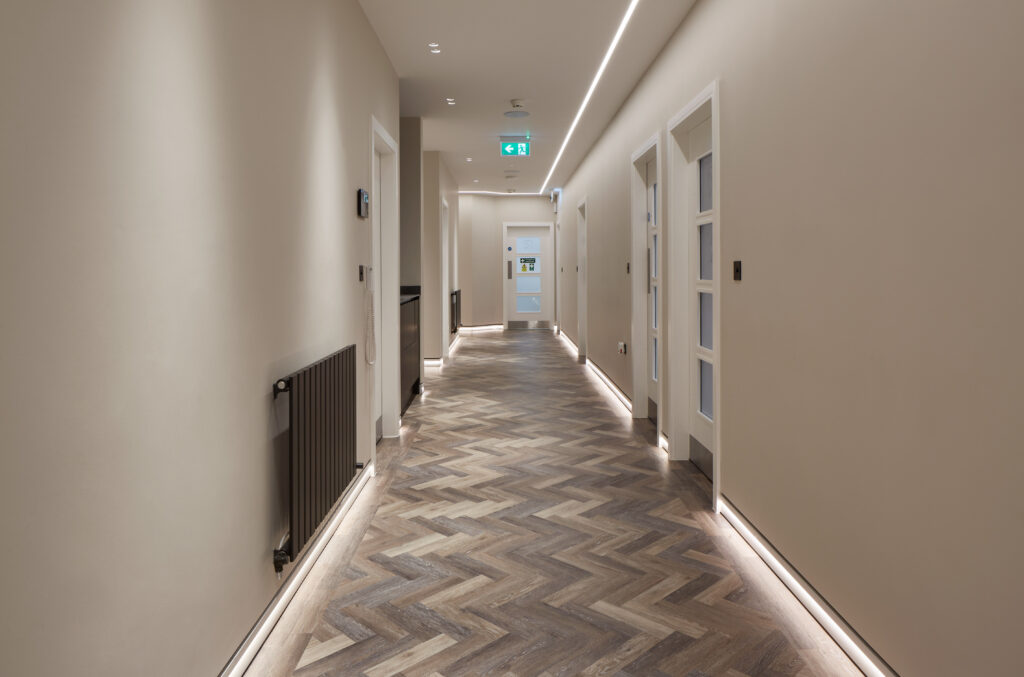Creating the right atmosphere
The colour temperature of the lighting that you choose is crucial to set the right atmosphere, whether it’s for relaxation or work. Here we tell you what works well in different spaces.
What is colour temperature?
Correlated colour temperature, or CCT, refers to the appearance or hue of light. It could appear “warm” with a yellowish tone or have a “cool” appearance and contain more blue light. Warmer lights are more relaxing, while a cooler light helps you concentrate and focus on a task.
While we use descriptors such as a “warm” light, or “daylight,” the Kelvin scale allows us to put values on the colour of light that a fitting produces. Lower numbers are warmer, while higher values are cooler.
For LED lighting typical values are:
2200K – Very warm or ember
2700K – Warm light
3000K – Soft white light
4000K – White light
5000K – Cool light or “daylight”
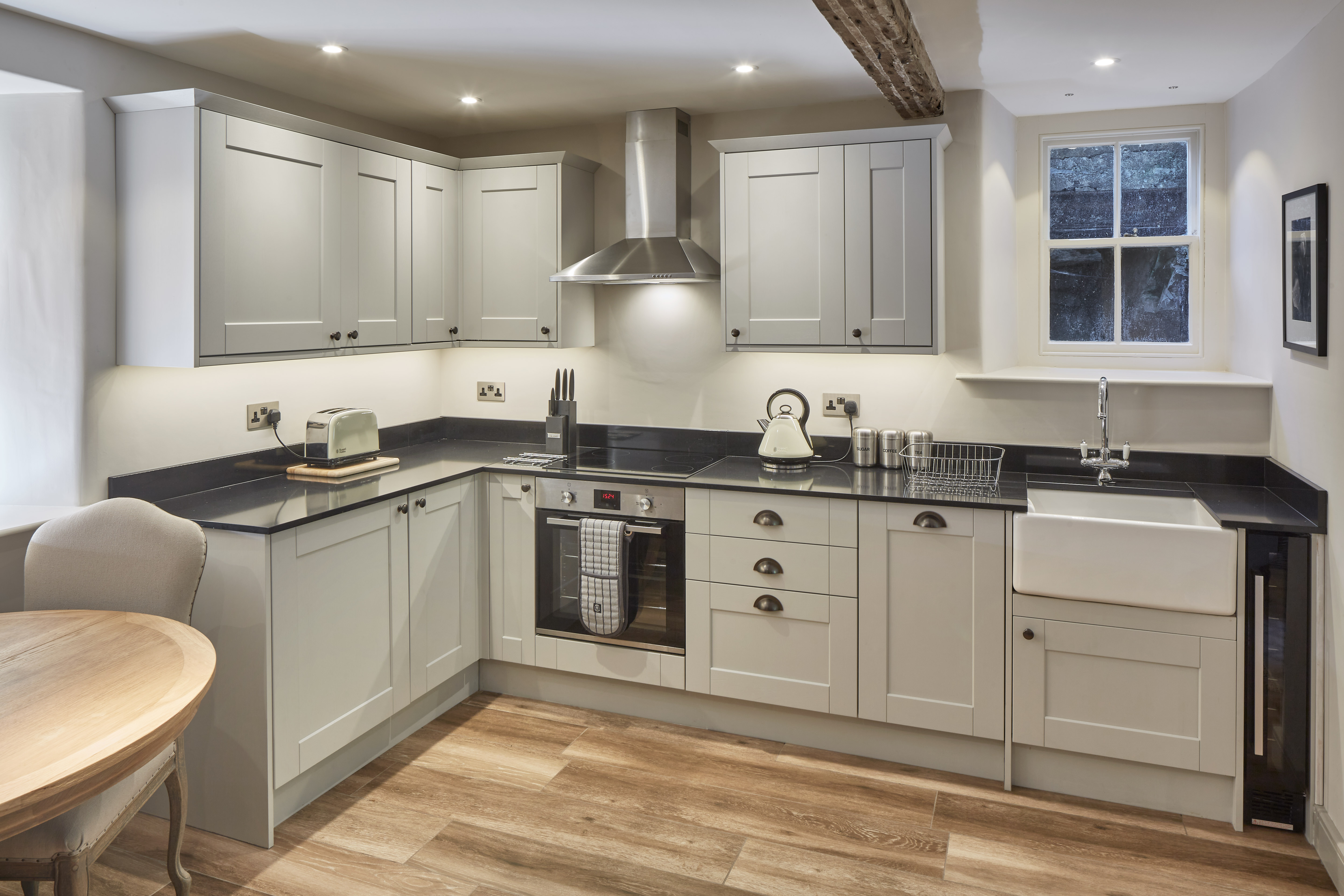
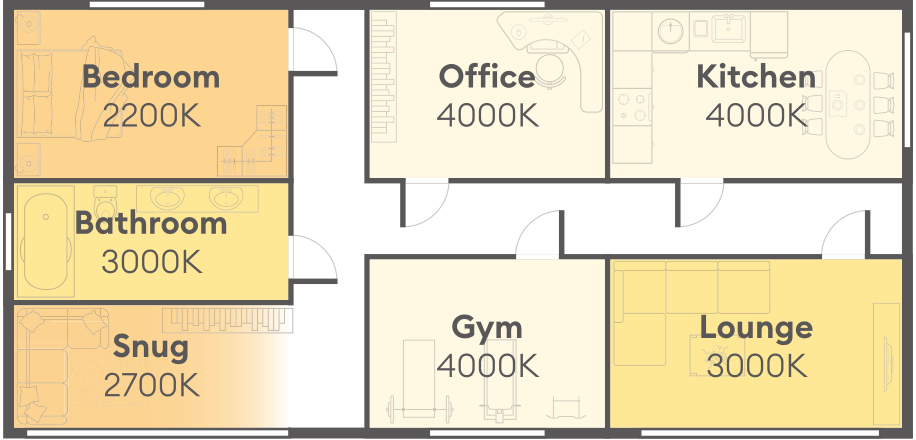
Correlated colour temperature in the home
The colour temperature that you select will affect how a room feels.
Warmer temperatures are more relaxing making it ideal for living spaces or bedrooms, while a cooler light helps concentration and focus for areas where people need to be more alert.
Pictured opposite is a typical CCT layout for a domestic installation.
By talking to your customer about different options, you will come up with a scheme that will delight them. For example, in a kitchen diner, they may want 4000K lighting in the food preparation areas but a more relaxed warmer light of 3000K where they sit down to eat and entertain.
Matching CCT to room decoration
The colour temperature of the light source will also affect how colours appear, which could have an impact on a room’s decoration.
Warmer colours such as reds, yellows and light wood appear vibrant with warmer CCTs. But when you view them with a light of 4000K or above they can look washed out.
And conversely blues, greens and dark materials look better with a 4000K or above light source, but less vibrant and washed out with warmer colour temperatures.
Using CCT to highlight materials
You can also select different colour temperature lighting to highlight materials for feature or accent lighting.
Wood / Sand Stone Whites
2200K – 2700K 3000K 4000K
Take a look at our “Lighting Design For The Home. Electricians Guide” for design advice and room by room tips.
Dim to warm
Some products, such as our 1901 range, allow you to create a progressively warmer light as you dim the fitting. So, while 3000K at full brightness is great for everyday use, you can dim it down to 10% with a 1800K CCT for a cosy and intimate environment.
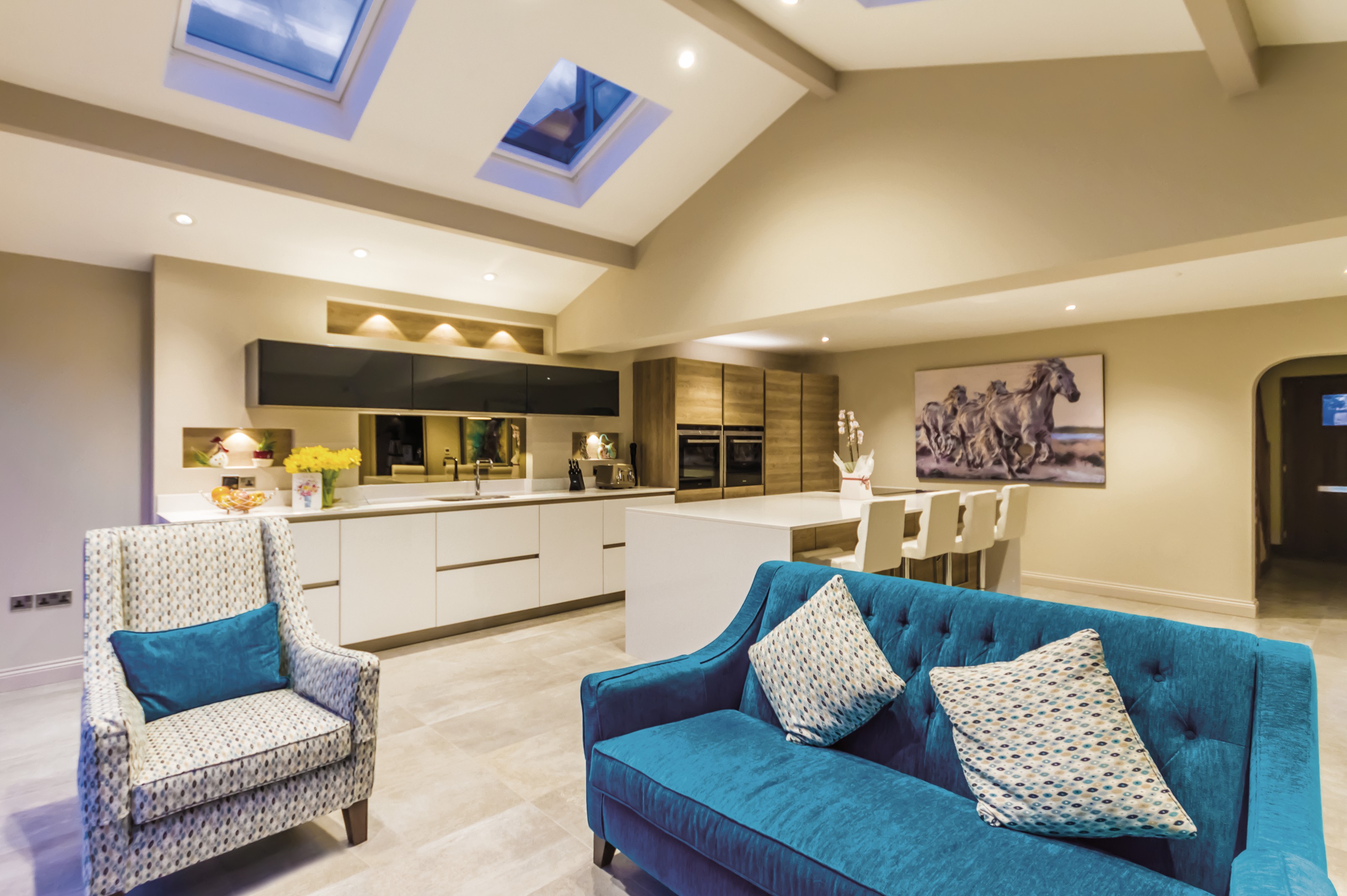
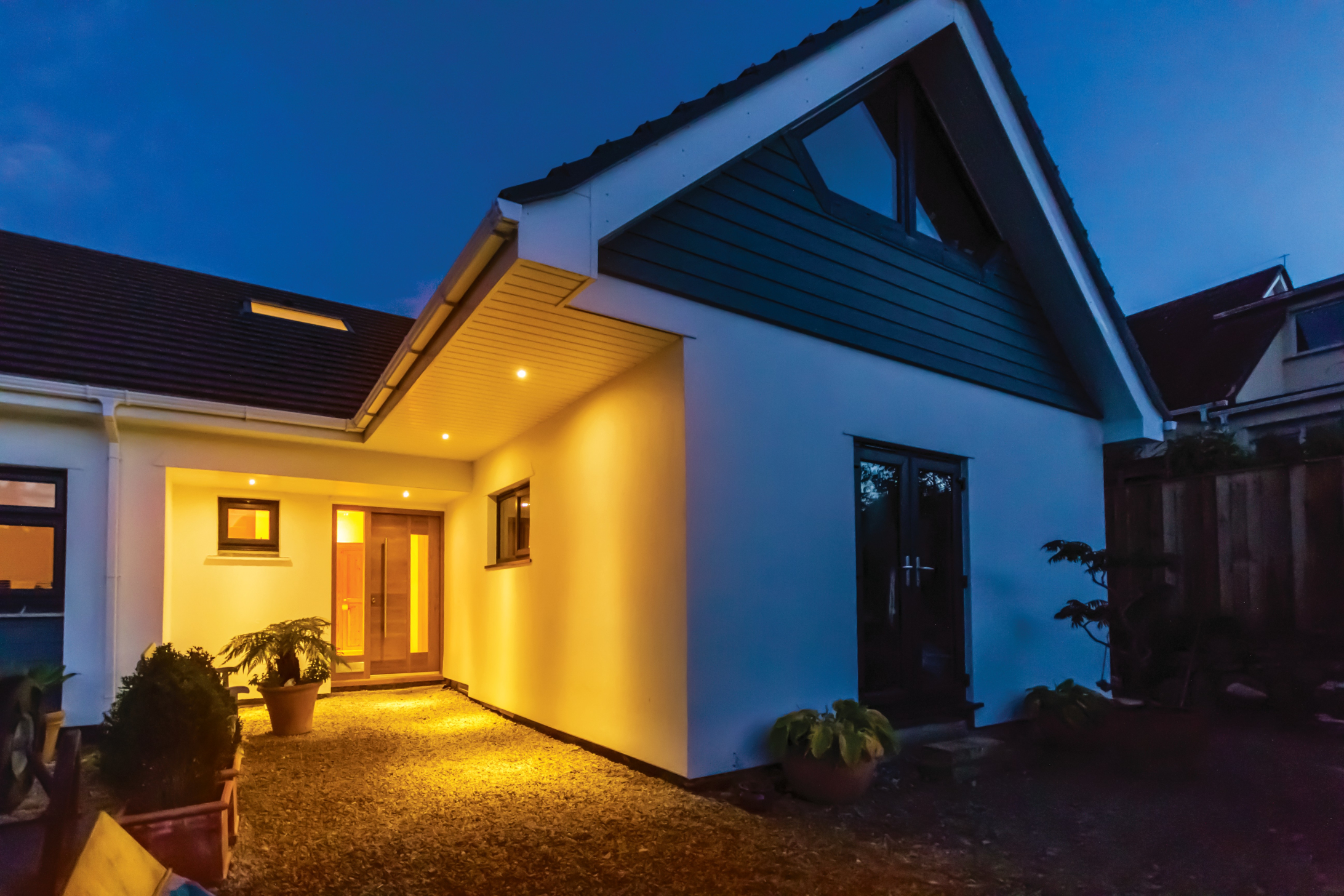
CCT for outdoor lighting
Outdoor lighting creates another room that people can enjoy on a warm summer’s evening or even looking out at from indoors as it gets too chilly.
But the wrong outdoor lighting can affect nocturnal wildlife and not meet many local councils “DarkSky” requirements. The amount of upward light spillage and in particular blue light will affect animal navigation, physiology, breeding, and general health.
Warmer colours of 3000K or lower are less likely to scatter in the atmosphere than higher colour temperatures and will have less effect on wildlife and on light pollution. Ideally the lower the CCT the better; we would recommend using 2700K or even 2200K sources.
CCT in commercial buildings
People need to concentrate on tasks, whether they are in an office or working in an industrial area. For most installations 4000K lighting is the best choice, but there are exceptions.
For restaurants and hotels your customer may want a warmer light of 2700K to 3000K so that guests can relax and even in offices there may be breakout areas that would benefit from a warmer light
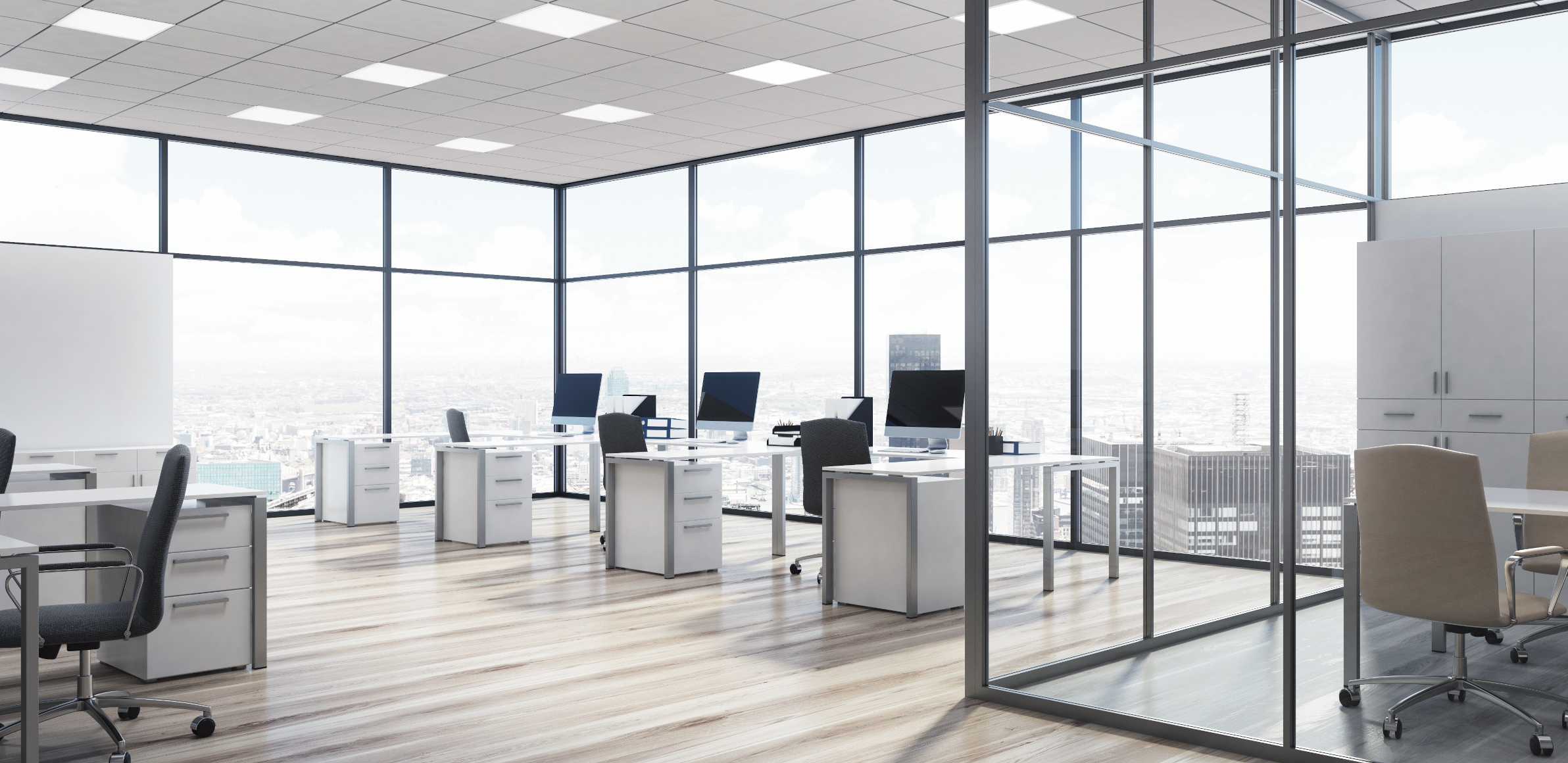
Colour Rendering Index (CRI)
And finally, you may need to ensure that a light source renders the true colour of an object, for example in a graphic design studio or for lighting artwork.
The colour rendering index measures this. The closer to 100 the lighting source the better its colour representation. For general lighting you should aim to install lighting with a minimum CRI of 80 and consider using 90 and above to bring out a true colour.
Switchable CCT fittings to make your life easier.
Many modern LED luminaires allow you to switch between colour temperatures, so you don’t need to carry lots of fittings in your van or rush back to the wholesaler for a different option.
They also allow you to easily demonstrate the effect of different colour temperatures to your customer. And if your customer changes their colour scheme for a room in the future then they can simply alter the CCT of the downlight to make sure that the room is lit to its best effect.
Modern LED lighting is flexible allowing you to offer your customer more choices from fewer fittings. The colour temperature you or your customer selects for a space will affect its mood and functionality. Getting it right and offering your customer different alternatives will truly add value to your next lighting installation.


